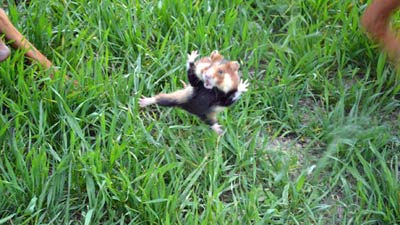Erin Conway-Smith, GlobalPost is
GlobalPost's South Africa correspondent.| Apr. 13, 2012
JOHANNESBURG, South Africa – Chinese workers in
Zimbabwe are buying up the local wildlife for dinner, feasting on endangered
tortoises, pythons, leopards — and even village dogs.
Viewed as
prestigious dishes, they would be expensive to serve at banquets back in China.
But in Zimbabwe they are relatively cheap. Worse yet, in this cash-strapped
country there’s a lack of resources to thwart the appetite for endangered game,
conservation groups say.
China is
investing significantly in mining, agriculture and construction, and its
companies bring along thousands of workers.
Where there are Chinese in Africa, illegal
trade in rare animals inevitably increases, according to experts. In Kenya,
elephant poaching rose sharply along roads built by Chinese construction crews,
and markets in Ethiopia cater to the Chinese demand for ivory chopsticks and
other illicit souvenirs.
One recent
case in Zimbabwe involved the gruesome discovery of meat and skeletal remains
of 40 tortoises, during a raid on Chinese workers' homes in Masvingo province.
The endangered Bell’s Hinged tortoises had been dropped into boiling water
while still alive in order to separate the meat from the shell, police and
animal welfare officials said.
Authorities
also found 13 live Bell’s Hinged tortoises — which are protected under
international laws governing trade of endangered species — kept in steel drums
without water or food.
Four Chinese
workers were fined $300 each and deported over the killing of endangered
tortoises “for personal consumption.” In some parts of China, tortoises are
used to make a very expensive soup.
“Our wildlife
remains a legacy for future generations of Zimbabweans and we should jealously
guard their future wellbeing,” the Zimbabwe National Society for the Prevention
of Cruelty to Animals (ZNSPCA) said at the time.
The ZNSPCA
plans to meet with the Chinese embassy about the pillaging of animals for food,
according to Ed Lanca, the group's national chairman.
“It’s an
ongoing trend. If it’s not tortoises, it’s dogs, if it’s not dogs, it’s
pythons,” he said. “We’ve even been told that leopard is also in demand.”
Chinese “are
encouraging local communities to procure the meat for them,” Lanca added.
There have
been reports of Chinese workers stealing baby tortoises from nature
conservancies in Zimbabwe, leading at least one to ramp up security.
Lanca said
another major concern is trade in endangered animal parts used in Chinese
medicine, including pangolin scales and lion bones.
China's
embassy in Zimbabwe wouldn't comment on the accusations, but was aware of the
tortoise case.
"We are
doing the research to see if this is true or not," a spokesman said.
Chinese
workers "respect the culture here," and "the Chinese people are
doing a lot of good things," including helping Zimbabwe's economy, the
embassy spokesman added.
There’s a
saying in China that people from the country’s south are renowned for eating
everything with legs except tables, and everything that flies except
airplanes.
But it’s not
just rare animals that are being targeted for the dinner plate. Chinese
nationals are also said to be buying dogs from villagers.
“Some are
strays, but they could well be people’s pets,” Lanca said.
Two years
ago, Chinese engineers installing transmitters in Matabeleland South were
accused of stealing local dogs to kill and eat. Several Chinese nationals were
arrested after being found brutally slaughtering dogs at their camp, but were
released with only a police warning.
The problem
seems to be continuing: Zimbabwe’s Financial Gazette reported last month on
allegations that dogs and cats are being served at upmarket Chinese restaurants
in Harare.
Last year,
China sent a high-level delegation to Zimbabwe to hold seminars encouraging
Chinese expatriates to respect the local culture, after reports of poor
treatment and underpayment of workers caused resentment and anger.
Lanca said
the ZNSPCA doesn’t have the money or human resources to address the new
problems caused by Chinese workers. The organization, financed entirely by
donors, is already tasked with looking after the welfare of all Zimbabwe’s animals,
from pet hamsters to giraffes and everything in between.
“We’re
terribly, terribly underfunded,” Lanca said, adding: “If we had enough vehicles
and manpower, we could take tackle this.”











